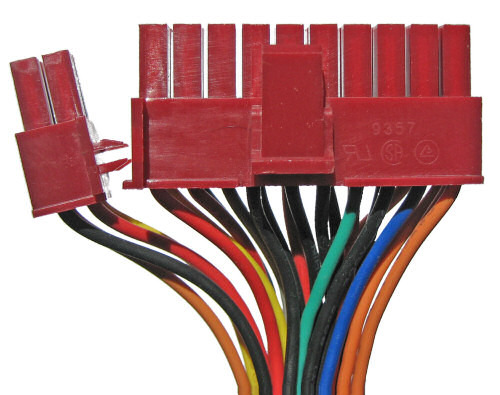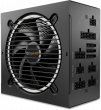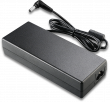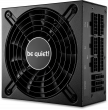XP600-12R Power 600W Quiet PSU Discontinued | |
XP480 Redwing 480W Rev3 Quiet PSU Discontinued | |
XP420-12R Power 420W Quiet PSU Discontinued | |
| More variations available Show | |
Xilence Power Quiet PSUs
The third generation Xilence power supply units - exciting design, latest technology and top quality. In the current revision, every power supply series has been completely revised. The results are not only impressive due to the high-efficiency technology, but also due to the new design and even better equipment. The connections have been coordinated to current systems and due to the increased energy efficiency, the power packages are even cooler and quieter.
All PSUs feature Molex plug easy-grip connectors, allowing the user to remove any plug with little hassle. See the specification table below for a full list of available connectors for each PSU.
| Specifications | Xilence 420W | Xilence 480W | Xilence 600W |
|---|---|---|---|
| Model Number | XP420-12R | XP480 | XP600-12R |
| ATX12V Version | v2.2 | v2.3 | v2.2 |
| 20-pin ATX Connector | Yes | Yes | |
| 24-pin ATX Connector | Yes | Yes | |
| ATX12V (4-pin) support | Yes | Yes | |
| EPS12V (8-pin) support | Yes | Yes | |
| PCI-E support (6-pin) | Yes | ||
| Number of floppy drive connectors | 1 | 1 | 2 |
| Number of hard drive connectors | 2 | 2 | 6 |
| Number of SATA power connectors | 4 | 4 | 4 |
| Master power on/off switch | Yes | Yes | Yes |
| Acoustic noise level | 20 to 24 dB(A) | 20 to 24 dB(A) | From 19.5 dB(A) |
| Fan size | 120mm | 120mm | 135mm |
| Mains input voltage selection | Full-range | Full-range | Full-range |
| Length of motherboard power cable | 45 cm (approx) | 45 cm (approx) | 45 cm (approx) |
| +3.3V maximum output current | 28 A | 26 A | 25 A |
| +5V maximum output current | 27 A | 28 A | 30 A |
| Total +12V maximum output current | 27 A | 38 A | 31 A |
| +12V1 maximum output current | 13 A | 18 A | 20 A |
| +12V2 maximum output current | 14 A | 20 A | 20 A |
| +5VSB maximum standby current | 2.0 A | 2.5 A | 3.0 A |
| Mains input voltage | 230 VAC, 50-60 Hz | 110-240 VAC, 50-60 Hz | 115-230 VAC, 50-60 Hz |
| Physical dimensions | Standard ATX (86 x 150 x 140 mm) | Standard ATX (86 x 150 x 140 mm) | Standard ATX (86 x 150 x 140 mm) |
| Fan speed control | Temperature Controlled | Temperature Controlled | Temperature Controlled |
| Certificates | CE | CE, RoHS, TUV, POCT | TÜV, CE, FCC, CUL, CB, CSA |
| Monitor pass-through power socket | No | No | |
| Warranty | 24 months | 24 months | 24 months |
| 20+4 pin ATX Connector | Yes | ||
| ATX12V (4+4-pin) support | Yes | ||
| PCI-E support (6+2 pin) | Yes | ||
| EAN barcode | 4044953105869 | 4044953102653 | |
| PCI-E support (6+2-pin) | Yes, x2 |
| Specifications | Xilence 420W | Xilence 480W | Xilence 600W |
|---|---|---|---|
| Model Number | XP420-12R | XP480 | XP600-12R |
| ATX12V Version | v2.2 | v2.3 | v2.2 |
| 20-pin ATX Connector | Yes | Yes | |
| 24-pin ATX Connector | Yes | Yes | |
| ATX12V (4-pin) support | Yes | Yes | |
| EPS12V (8-pin) support | Yes | Yes | |
| PCI-E support (6-pin) | Yes | ||
| Number of floppy drive connectors | 1 | 2 | |
| Number of hard drive connectors | 2 | 6 | |
| Number of SATA power connectors | 4 | ||
| Master power on/off switch | Yes | ||
| Acoustic noise level | 20 to 24 dB(A) | From 19.5 dB(A) | |
| Fan size | 120mm | 135mm | |
| Mains input voltage selection | Full-range | ||
| Length of motherboard power cable | 45 cm (approx) | ||
| +3.3V maximum output current | 28 A | 26 A | 25 A |
| +5V maximum output current | 27 A | 28 A | 30 A |
| Total +12V maximum output current | 27 A | 38 A | 31 A |
| +12V1 maximum output current | 13 A | 18 A | 20 A |
| +12V2 maximum output current | 14 A | 20 A | |
| +5VSB maximum standby current | 2.0 A | 2.5 A | 3.0 A |
| Mains input voltage | 230 VAC, 50-60 Hz | 110-240 VAC, 50-60 Hz | 115-230 VAC, 50-60 Hz |
| Physical dimensions | Standard ATX (86 x 150 x 140 mm) | ||
| Fan speed control | Temperature Controlled | ||
| Certificates | CE | CE, RoHS, TUV, POCT | TÜV, CE, FCC, CUL, CB, CSA |
| Monitor pass-through power socket | No | No | |
| Warranty | 24 months | ||
| 20+4 pin ATX Connector | Yes | ||
| ATX12V (4+4-pin) support | Yes | ||
| PCI-E support (6+2 pin) | Yes | ||
| EAN barcode | 4044953105869 | 4044953102653 | |
| PCI-E support (6+2-pin) | Yes, x2 | ||
Customer Reviews
We haven't received any reviews of this product yet.
quiet under load
I can confirm that it is quiet. Not silent, but is definitely worth the money.
Mines Gone Bang Today
Bought this power supply in May 2008, it wasn’t silent as you could hear the fan pulsing (pwm possibly). It’s been a good power supply with no signs of any problem until today. Soon as the power was turned on, it let out a very loud bang.
It was only powering a core 2 duo 6300, 1gb of ram, 1TB drive and dvd-rw. Computer was used maybe 4-5 hours a day web browsing and watching films/youtube. The weight of it felt like it was quality and would atleast last 10 years. I guess I was wrong.
Great PSU, vfm
I bought one of these to replace the totally fanless PSU that got nuked by a power spike in my old quiet running PC. As other reviewers note, this is not totally silent, however it is extremely quiet - the HD makes more noise than this excellent device.
Excellent PSU
It is not real silent PSU but very QUIET 20~24 db(A). I really recommend it. Price is fairly good I guess so! It has a red fan size 120mm. Product’s box is well designed.
SUPER SILENT
I bought this PSU as a replacement for a faulty Coolermaster I had. I was hoping it would be quieter than the old unit and i was astonished I thought the power button on my pc had broken there was almost no noise what so ever. Well impressed with Quiet PC will use again for sure!!
Fairly quiet but not silent
This is a good PSU and fairly quiet but I can still hear it! I previously had a unit which was totally silent so I’m probably more sensitive…
Xilence XP480-12R Power 480W Quiet PSU
Very pleased with my purchase. I was having a lot of trouble with my PC when a knowledgeable acquaintance suggested it might be a faulty PSU. The new PSU was a piece of cake to fit. The only worrying bit was trying to figure out why the PSU had a 8 pin ATX 2.2 connector and my motherboard had 4 pins. In the end I crossed my fingers and hoped for the best and discovered it plugged in no problem and just left four holes on the PSU connector unused. The PC now works a dream and is very quiet.
Finally failed - 7yrs @24x7
Seems to have worked fine until sometime during the night last night and blew - blowing a fuse in my power brick….Thought it may have taken the motherboard with it but new PSU installed and all good. I guess I can’t complain toooo much after 7yrs of 24x7 service.
Good, but question long term reliability
Overall this PSU has been good and quiet for a reasonable price, but just recently mine has started to sound like a tractor at times, some problem with the fan. It seems that the spindle is rubbing on something or providing some sort of restriction which is causing noise. Maybe the grease has worn away, who knows, anyway I’ve had this unit for 2.5 years so its out of warranty. There’s always going to be a duff here and there and like I say it has worked well up till now, so just putting this out there as feedback on my experience.
Not silent
This power supply is well built and stable and at first it seems quiet enough. However running for 30 minutes with around 60% load the fan picks up speed and its certainly not s(x)ilent. I’ve had standard non-spec PSUs quieter. Disappointing. I’ve got 2 on these on identical PC’s and they’re both the same.
Super Quiet
What a bargain. Easy to fit, super quiet, absolutely awesome purchase. Confused about the ATX 2.2 connectors with my ATX motherboard, but figured it out. Well built, great design, highly recommended
Product Resources
FAQ
Do high wattage power supplies cost more to run?
No - the rated wattage of a power supply refers to the maximum amount of power it can deliver at full load, not how much power it uses. More powerful PSUs will consume around the same amount of power as lower powered power supplies in any given PC system, so your electricity bill will not be higher when using a more powerful power supply!
The best way to reduce your electricity bill when using your PC is to use a more efficient power supply or make your PC consume less power by removing components which are not needed, such as extra drives and expansion cards, or by choosing a cooler-running processor or graphics card.
My brand new power supply doesn’t work! Am I doing something wrong?
It’s possible that the power supply may be faulty, but here are some simple things to check. Firstly, a power supply will not work if you simply plug it in and flick the switch. The power supply will only turn on if you connect it to a working motherboard and associated items (processor, memory, video card, etc). It is actually the motherboard which tells the power supply when to switch on.
Secondly (if applicable), check the voltage is set correctly to 115/230 volts depending on what country you are in. Thirdly, if possible it would be good to try the power supply in another PC to see if it works, or try another power supply in your PC to see if that works. You can then tell whether it is the power supply which is faulty or the actual PC itself. If all else fails, please contact us for further support, and/or return details.
Why should I buy a whole new PSU when I could just replace the noisy fan in my existing one?
Virtually all the noise generated by a PC power supply originates from the cooling fan inside it, so simply replacing the fan with a quiet fan may seem an obvious way to go. However, if you are thinking about attempting this operation, please bear the following points in mind:
- Your existing power supply will be designed to run with a specific amount of airflow in order to adequately cool the components inside and reducing the airflow may lead to overheating and damage to the power supply and/or PC.
- All PC power supplies contain very high voltages and even with the power disconnected, the voltages stored in the capacitors can be easily enough to kill. It is not recommended to take the cover off any PC power supply for this reason unless you are absolutely confident of your own ability. Because of the grave dangers involved, all PC power supplies by law carry a warning label forbidding removal of the power supply case.
- There will be no standard PC fan connector inside the power supply to use to connect a replacement fan, and it would probably have to be soldered directly into the PCB inside the power supply, or have a specialist power connector attached. This can be a tricky operation to say the least.
Please consider the above points very carefully before proceeding with an operation to replace the fan in your existing power supply!
What is PFC (Power Factor Correction)?
If you are interested in being “green” and saving the planet, you might like to read a short explanation of how our power supplies can save energy using Active PFC (Power Factor Correction), not to be confused with Power Conversion Efficiency which is also very good in most of our PSUs. “Power Factor” is a measure of how efficiently electrical power is consumed. Ideally, Power Factor would be 1 (or 100%) and known as unity.
Unfortunately in the real world, Power Factor is reduced by highly inductive loads down to values of 0.7 (70%) or less. This induction is caused by equipment such as small electric motors, fans, fluorescent lighting ballasts and transformers such as those in PSUs. This is bad news for the electricity generating companies who can impose a surcharge on heavy users if they have a consistently low Power Factor, as more electricity has to be produced to make up the shortfall.
Power Factor Correction (PFC) is used in some equipment to minimise the inductive component of the electrical current. This helps to reduce the losses in the electrical supply to that equipment. Power Factor Correction capacitors are normally used to reduce induction in an electrical load, which minimises wasted energy and hence improves the efficiency of a company and reduces electricity costs.
It is not usually practical to reach unity, i.e. Power Factor 1, and it seems that most electricity supply companies accept consumers having a Power Factor as low as 0.94 (94%) without imposing a surcharge. Unfortunately most of the cheap (and not so cheerful) PSUs tend to have a Passive PF as low as 0.75 or 75% which in a large office can lead to a PF surcharge.
However, the good news is that most of Quiet PC’s PSUs implement a system known as Active PFC which involves some clever electronics. This means that their power factor (PF) can be as high as 0.94 or 94% (at full load), while harmful harmonic frequencies are reduced to well below legal requirements. So by using our products, you can be happy in the knowledge that you are doing your bit to save the planet!
How do I know what size of wattage power supply I need?
The best answer we can give to this question is to go ahead and take an intelligent “guesstimate”! There are no hard and fast rules about what size of power supply any given PC needs as a minimum. Our advice would be that if you are replacing an existing power supply, then consider a new one at least of the same wattage as the old one. In addition, if you wish to build in a “safety margin” to allow for reliable running and possible future upgrades, consider adding 100-200 watts to the rating of your existing unit.
If you are building a new PC, most customers now buy a power supply rated in the region of 500-800 watts depending primarily on the performance level of their graphics card(s) and number of drives to be installed. But in any event if you are unsure about which power supply would be best for your PC then please do contact us by phone or email and we will be happy to give you a specific recommendation based on your budget.
My new PSU came with a 24-pin connector but my motherboard needs 20 pins! Do I need an adaptor cable?
We receive many customer enquiries about this. In fact, most of the 24-pin compatible power supplies we sell come with special motherboard connectors which can be converted to 20-pins with no additional conversion cables. All you need to do is look carefully at the connector and you will see that the end four pins can be slid off, turning the connector into a 20-pin compatible one (see below) - easy when you know how!

Image showing how to change a power supply’s 24-pin motherboard connector into a 20-pin connector by unclipping the end four-pin blockWhat do the PSU safety protection abbreviations mean?
There are many possible safety protections a PSU can have. Below is a list of what each abbreviation means. Please note, not all PSUs have all safety protections.
- OCP - Over-Current Protection
- OVP - Over Voltage Protection
- UVP - Under Voltage Protection
- SCP - Short Circuit Protection
- OPP - Over Power Protection
- OTP - Over Temperature Protection
- UL - Underwriters Laboratories, more information.
- TÜV - Technical Inspection Association, more information.
- CE - European Conformity, more information.
- FCC - Federal Communications Commission, more information.
- RoHS - Restriction of Hazardous Substances Directive, more information.
- WEE - Electronic waste, more information.
- 80 PLUS - Promotes energy efficiency for PC power supplies, more information.
- ErP - Energy Related Products, more information.
More information on certification marks can be found here.
Top Quiet Power Supplies

Seasonic PRIME TX-1600 Noctua Edition 1600W 80Plus Titanium Semi-Fanless PSU

Seasonic PRIME Fanless 500W 80PLUS Platinum Modular Power Supply

Streacom ST-NANO160 160W nanoPSU and AC/DC adapter block

Streacom ST-ZF240 ZeroFlex 240W Passive PSU

Seasonic PRIME Fanless 700W 80PLUS Titanium Modular Power Supply

be quiet Pure Power 12 M 750W 80+ Gold Fully Modular ATX3.0 PSU

be quiet Pure Power 11 400W Quiet PSU 80PLUS Gold

FSP Hydro Ti Pro 1000W 80PLUS Titanium Fully Modular ATX 3.0 PSU

Akasa 120W Thin mini-ITX power adapter, AK-PD120-04M

be quiet 600W SFX-L Modular 80PLUS Gold PSU

